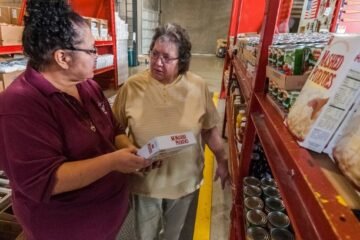Japan is grappling with the aftermath of a 7.6-magnitude earthquake that struck the southern island of Kyushu on Monday, killing at least 30 people and injuring about a thousand. The quake was the second in a series of powerful tremors that hit the region, following a 6.4-magnitude quake on Thursday that killed nine people.
The shallow quake triggered landslides, fires, power outages, and infrastructure damage, leaving many people trapped under rubble or cut off from help. Rescuers are in a “race against time” to find survivors amid forecasts of heavy rain and cold overnight, Japan’s Prime Minister Fumio Kishida said. He added that rescue operations at night would be extremely difficult and urged people to stay alert for aftershocks.
Some of the worst-hit areas were in Ishikawa prefecture, on Japan’s northwest coast, which was the epicenter of Monday’s quake. All of the confirmed deaths were in Ishikawa, according to local media reports. Many residents in coastal areas were evacuated due to tsunami alerts, which were later lifted.

Japan’s history of seismic activity
Japan is located on the seismically active “Ring of Fire” around the Pacific Ocean and has experienced many devastating earthquakes in its history. The country has strict building codes and disaster preparedness measures to mitigate the impact of quakes, but some older structures and rural areas are more vulnerable.
The most recent major quake to hit Japan was in March 2011, when a magnitude 9 quake north of Tokyo triggered a massive tsunami and nuclear meltdowns at Fukushima, causing widespread damage and contamination. More than 18,000 people died or went missing in the disaster, which also displaced hundreds of thousands of people.
In 1995, a magnitude 6.9 quake struck the port city of Kobe, killing more than 6,000 people and injuring more than 40,000. The quake exposed the weaknesses of Japan’s urban infrastructure and prompted reforms in building standards and emergency response.
In 1923, a 7.9-magnitude earthquake hit the Tokyo area, killing more than 140,000 people and destroying much of the city. The quake also sparked fires and landslides that worsened the devastation.
International support and solidarity
The international community has expressed its support and solidarity with Japan in the wake of the quake. The United States, China, South Korea, and other countries offered to send aid and assistance to Japan, while the United Nations and the European Union expressed their condolences and readiness to help.
Many world leaders and celebrities also sent their messages of sympathy and encouragement to Japan through social media and other platforms. U.S. President Joe Biden tweeted that he was “heartbroken” by the news and that the U.S. stood with Japan “as a friend and ally.”. Chinese President Xi Jinping said he was “deeply saddened” by the quake and hoped that the Japanese people would “overcome the difficulties and restore normal life as soon as possible.”. South Korean President Moon Jae-in said he was “shocked and saddened” by the quake and offered to provide any necessary support to Japan.
Some of the famous personalities who expressed their support for Japan included singer Lady Gaga, actor Tom Cruise, tennis star Naomi Osaka, and soccer player Cristiano Ronaldo. They praised the resilience and courage of the Japanese people and urged them to stay strong and safe.
How to help and donate?
Many people around the world have expressed their desire to help and donate to the relief and recovery efforts in Japan. Several organizations and platforms are accepting donations and providing aid to the affected areas. Some of them are:
- The Japanese Red Cross Society, which provides medical and humanitarian assistance to earthquake victims, Donations can be made through its website or the International Federation of Red Cross and Red Crescent Societies (IFRC).
- The Japan Platform, which is a coalition of 46 Japanese NGOs that are working on emergency relief and reconstruction in Japan, Donations can be made through its website or various partner organizations.
- GlobalGiving, which is a crowdfunding platform that connects donors with local nonprofits and community leaders in Japan, Donations can be made through its website or its Japan Earthquake Relief Fund.
- Save the Children, which is an international NGO that focuses on the needs and rights of children in crises, Donations can be made through its website or its Japan Earthquake and Tsunami Children in Emergency Fund.






